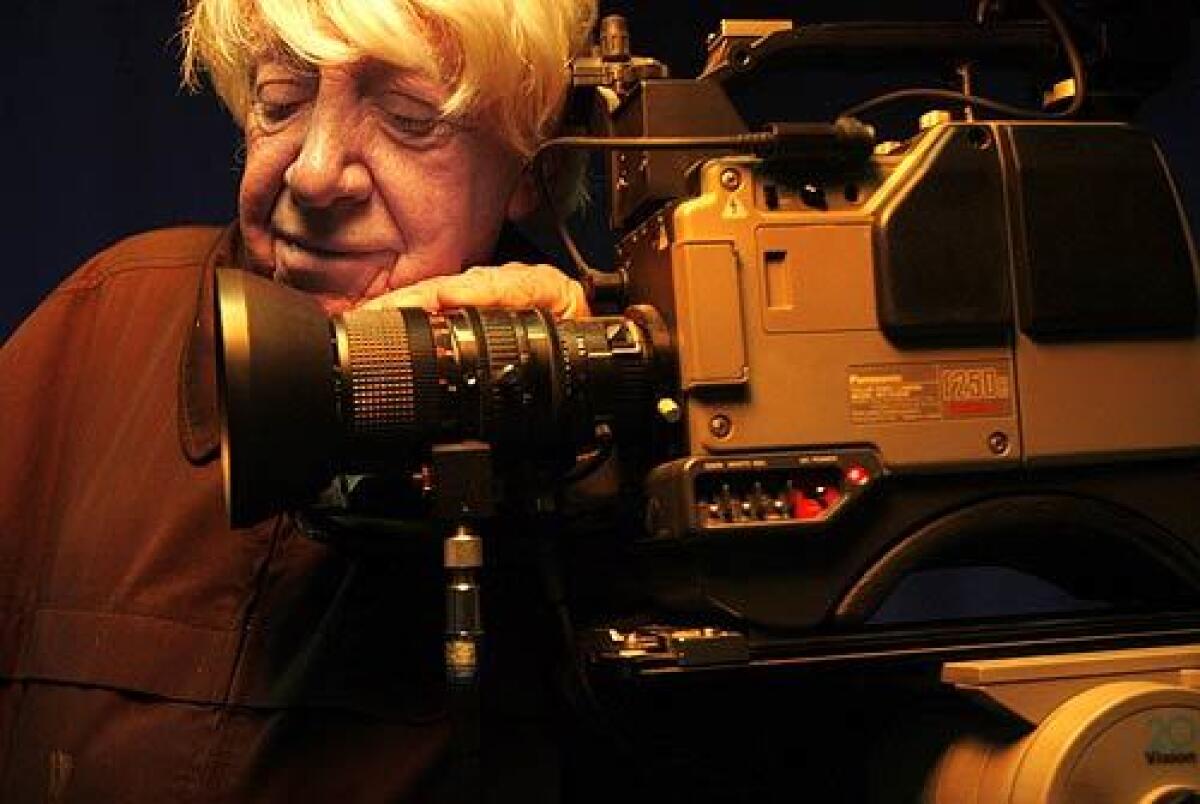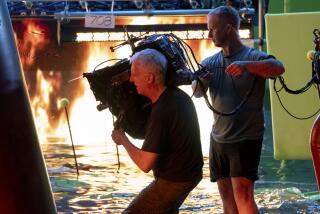Hosts, producers urge L.A. City Council to retain public access TV

Skip E. Lowe was on his way back from the TV studio Wednesday when he learned that his 30-year-old public access show may not fade to black in Los Angeles after all.
Across town, City Council members were struggling to keep the plug from being pulled on Los Angeles’ public access TV network. New cable company franchise rules threaten to cut off the city’s four channels reserved for public, educational and governmental uses.
That’s where a daily flow of often kooky talk shows, holistic healing programs and religious discussions are shown alongside staid City Council sessions and bureaucratic Board of Supervisors meetings.
A new state policy that takes effect Jan. 1 will allow cable companies to pay cities a fee instead of producing public access content for their channels. Public access channels that go dark because of a lack of use could be used for revenue-producing commercial shows.
A parade of cable show hosts and producers pleaded with council members to continue providing them with free production studios that they say are needed to preserve the public access system. They argued that modern video on demand technologies such as YouTube can’t compare with the channel-surfing ease of the old-fashioned TV.
“The Internet doesn’t work -- it would be the death of public access,” said Charlie Mount, whose Hollywood-based Classic Arts Showcase provides cultural programming to public access channels. “People are not going to find these programs on the Internet.”
Councilman Bill Rosendahl, a former cable company executive whose outlets cranked out 3,500 public access shows annually over 23 years, said that the city may be able to come up with $1 million from current cable franchise fees to keep at least four of Los Angeles’ 12 public use TV studios open for do-it-yourself show producers and hosts.
The studios would be leased back from Time-Warner cable, which through Dec. 31 is operating them with 48 full-time and four part-time employees, according to city technology officials.
“This is a very serious moment in public access,” Rosendahl told council colleagues. “The city of Los Angeles has a chance to save it.”
That was good news to Lowe, a onetime child star turned actor, who has reigned for three decades as Los Angeles’ king of public access. The colorful entertainer has had everyone from Leonardo DiCaprio to Hollywood community activist John Walsh on his interview shows.
“It’s a big relief to hear they’re trying to do all they can to help us,” Lowe said after stepping from a Time-Warner cable studio in Hollywood. “What we do is very valuable. People like to watch what’s happening in their own area and see local people on TV. Who else is going to put them on?”
Tough-guy actor Aldo Ray was the first guest on “Skip E. Lowe Looks at Hollywood” in 1978, followed by actor Joseph Cotten and writer-director Orson Welles, actress Shelley Winters and 1950s sex siren Mamie Van Doren. “I’ve rejuvenated a lot of stars. To me, they are stars. I never use the term ‘has-been,’ ” Lowe said.
Other cable hosts were also breathing easier. Writer Victoria Looseleaf, who calls herself “the goddess of public access,” has produced more than 400 episodes of “The Looseleaf Report” since 1987. She had planned a final, farewell, blow-out show for Dec. 11 to mark the end of her program and the cable access era. Because guests are already lined up for it, that show will go on, she said Wednesday.
Jerome Cleary, a West Hollywood stand-up comedian, had resigned himself to losing his audience in 30 Los Angeles suburbs.
He said he intended to continue his 300-episode talk show and separate “Jerome on the Town” show on that two-square-mile city’s cable system no matter what happens in Los Angeles. “I don’t think four studios can handle all of the shows that are done now in 12 studios,” he said.
Smaller cities such as West Hollywood have waited warily for the new state cable franchising rules to take effect. There, six public access channels are available, counting governmental and arts outlets.
“I don’t think at this point that we’re in danger of losing the six channels, no,” said Helen Goss, who helps oversee West Hollywood’s public access channels. “We haven’t lost them yet, but Time-Warner has the ability to discontinue them.” The earliest that would be is 2014, said Time-Warner regional Vice President Patricia Fregoso-Cox.
Time-Warner cable is also Los Angeles’ largest cable TV franchise holder with 565,000 subscribers. Additionally, Cox Communications has about 10,000 customers in the San Pedro area and Charter Communications has a mere 60 on the nearby Palos Verdes Peninsula, according to city officials.
Although public access channel viewership numbers are unknown, officials say about 45% of the do-it-yourself shows are devoted to talk, 35% to religion, 19% to music and variety and 1% to sports.
The shows have turned some hosts, such as sex therapist Susan Block, into minor local celebrities. Block, whose show was censored by the now-defunct Adelphia cable company, attended Wednesday’s City Hall hearing.
His show is more sedate, but it’s still provocative, Lowe said.
“I enjoy doing mine,” he said. “I’m in my 70s. Public access television keeps me alive.”
Pool is a Times staff writer.
More to Read
Start your day right
Sign up for Essential California for news, features and recommendations from the L.A. Times and beyond in your inbox six days a week.
You may occasionally receive promotional content from the Los Angeles Times.







